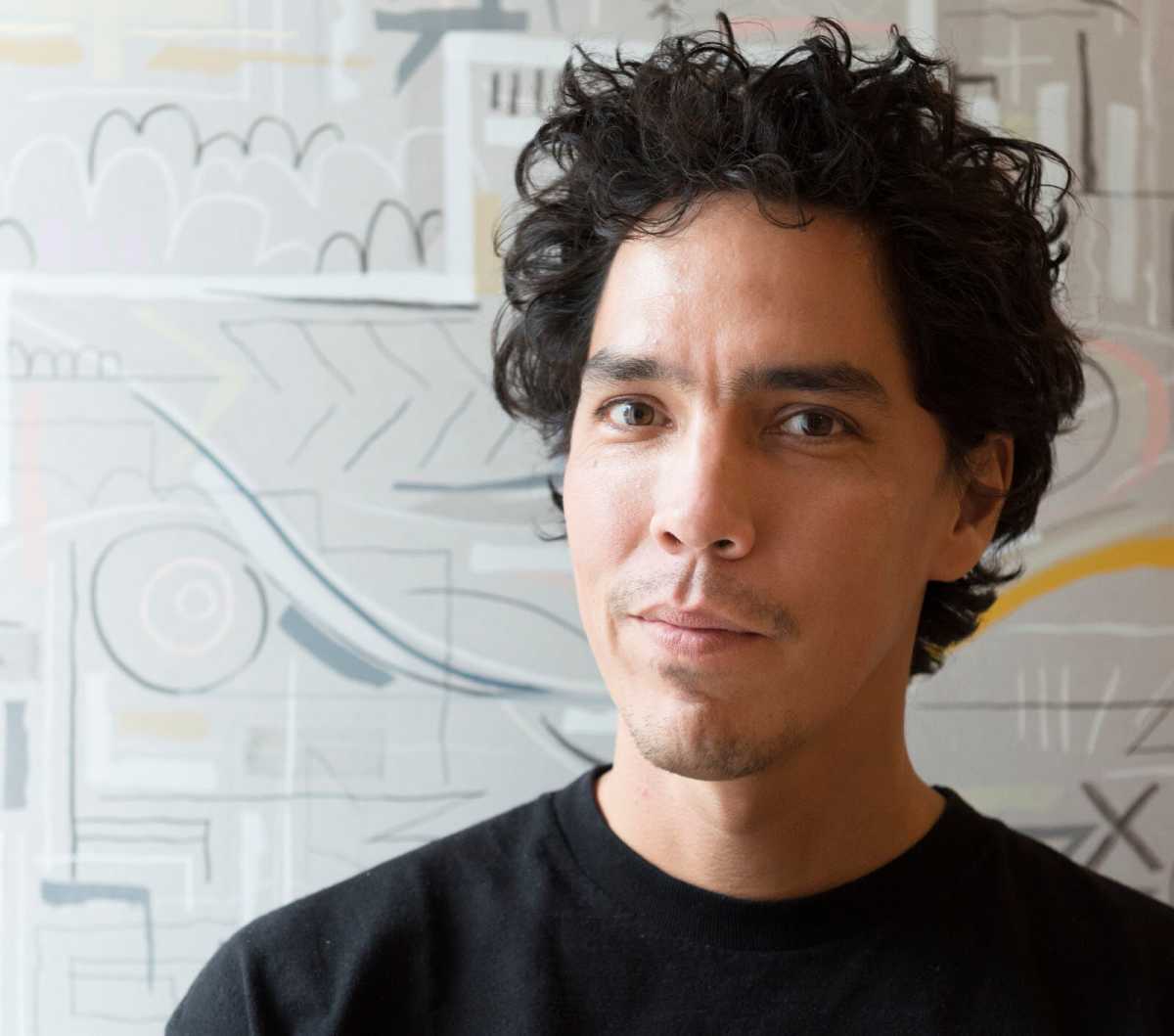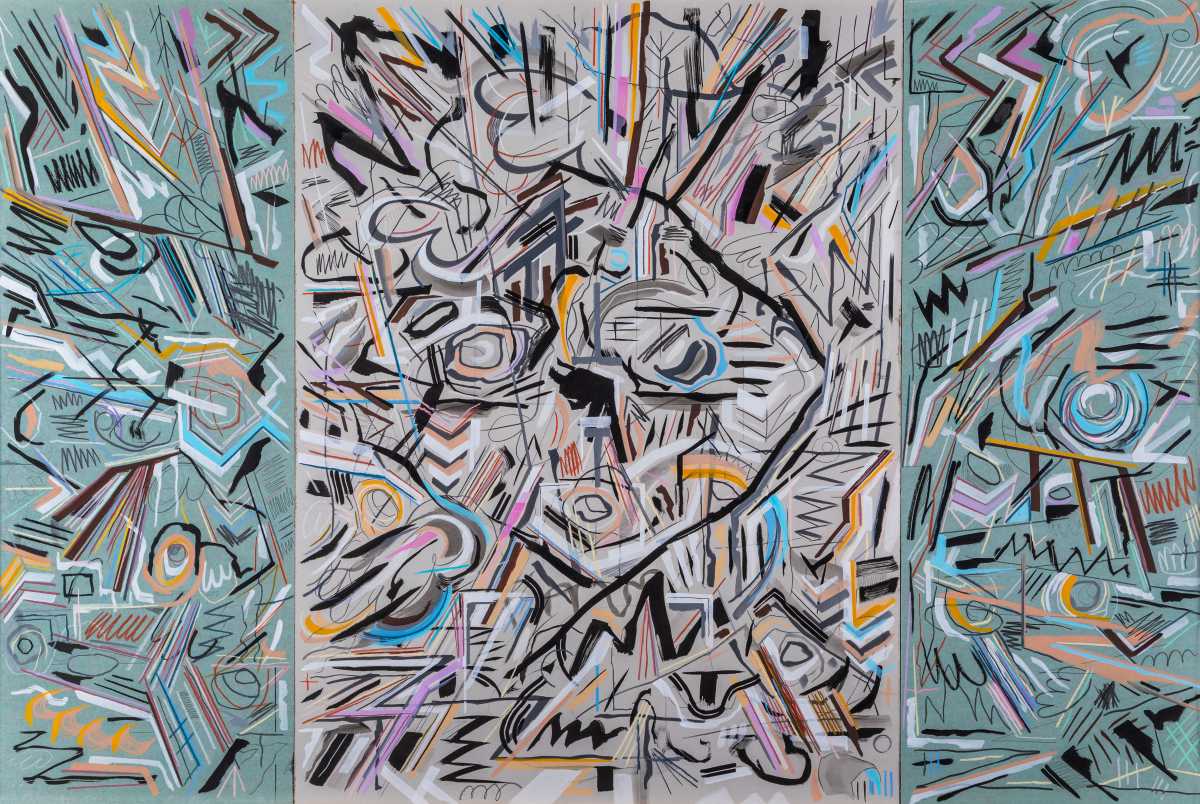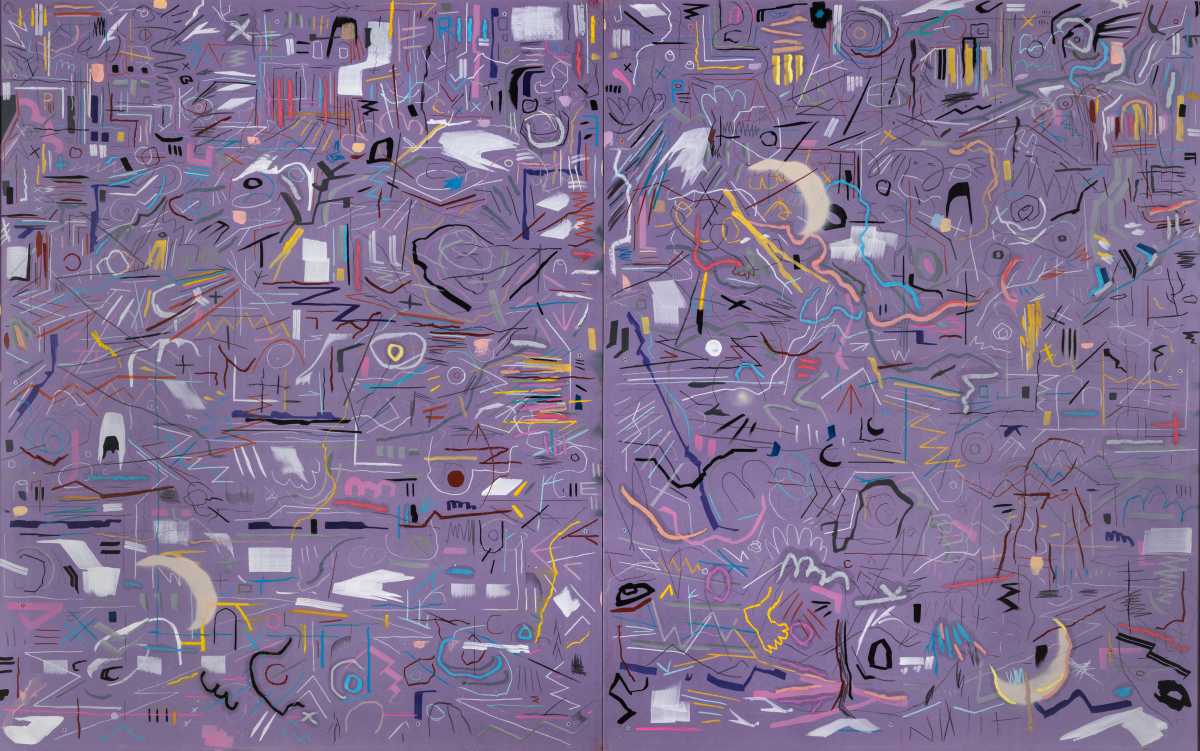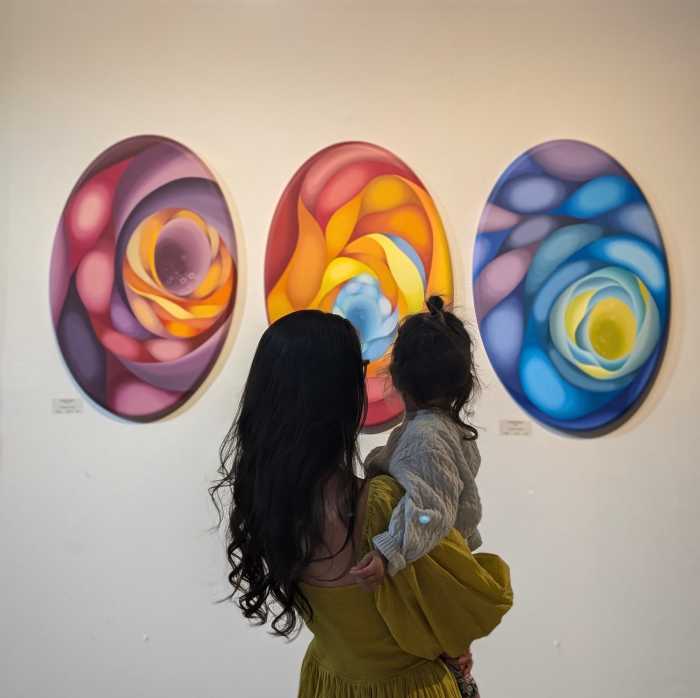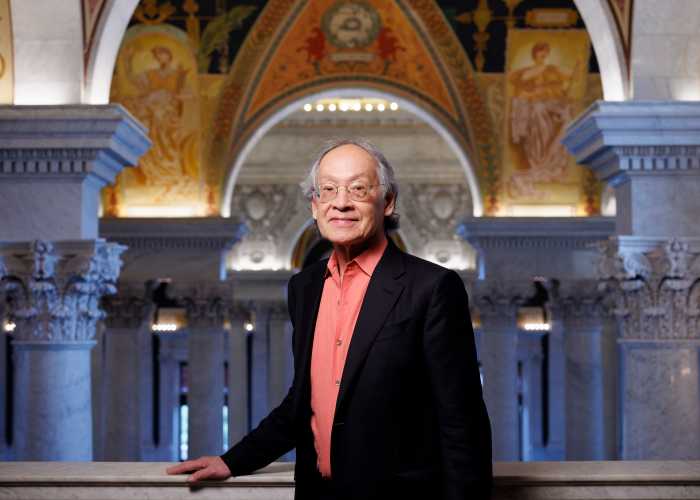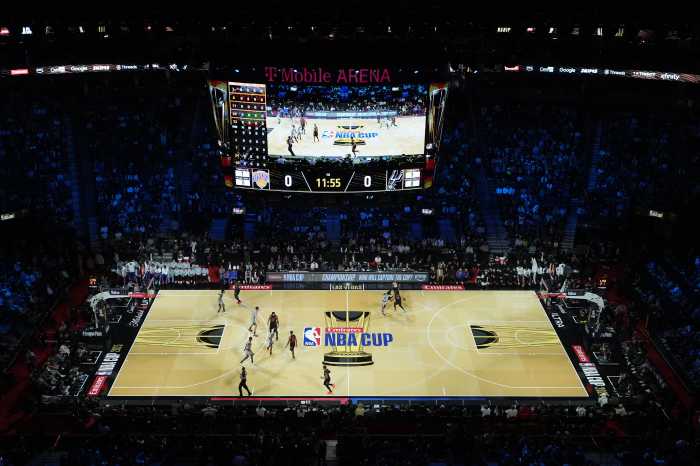Matthew Alan Kirk’s colorful abstract paintings will be on display at a new exhibition in the Eiteljorg Museum, an Indianapolis museum that “seeks to inspire an appreciation and understanding of the art, history and cultures of the American West and the Indigenous peoples of North America.”
“Just to be recognized, to be part of this roster of other artists that have come before me … it’s so great,” Kirk, who is of Navajo descent, told QNS. “I’m looking forward to it being a springboard.”
Other than having his work, along with the work of four other artists, showcased at the “Blurring the Line: The Eiteljorg Contemporary Art Fellowship 2019” exhibition from Nov. 16 to Feb. 2, Kirk also received a generous fellowship from the museum.
The father of two boys, an 11-year-old and a 5-year-old, will be awarded $25,000 in unrestricted funds. The museum will also purchase $115,000 worth of his and fellow artists’ work for its permanent collection.
Kirk settled in Ridgewood five years ago after moving to New York City almost 14 years prior to pursue his lifelong dream of becoming an artist.
The experience, so far, has been a validating one for him.
“It’s just been a good, slow, steady grind,” Kirk said. “But it’s paying off now.”
Kirk currently works as an art handler, helping move and deliver art pieces around the city. Although he didn’t go to art school — “being an art handler was my art school,” he joked — he found that the work helped him build his network.
It was thanks to a fellow Indigenous artist, the award-winning Jeffrey Gibson, that Kirk first heard about the fellowship back in 2012 and connected with the Smithsonian. Kirk applied then, but he knew the timing wasn’t right.
But last year, after his exhibition at the Fierman gallery, he gave it another shot.
“I still kept showing and making work, and so my network had grown significantly since my first show, so I had a lot of people to get a hold of,” Kirk said. “It ended up being where I got to meet a lot of Native curators and people within the Native art world. And one of them reminded me to apply for this fellowship again, so I did.”
Several months later, he got the call from the Eiteljorg Museum.
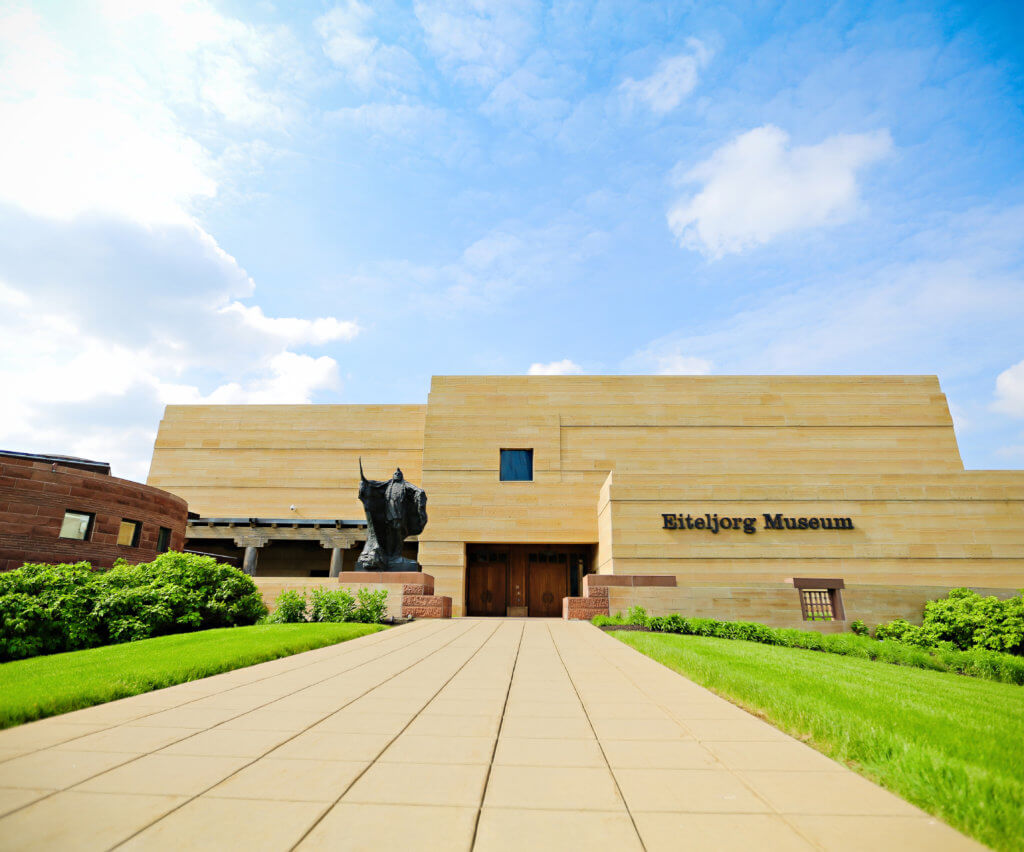
Kirk believes this moment feels especially important since he not only struggled with his identity growing up, but also found it difficult to connect with fellow Indigenous people.
The 41-year-old was born in Arizona, but grew up in Wisconsin. His father is Navajo and his mother is mixed-European.
Since he didn’t grow up near his father’s side of the family, it wasn’t easy for him to connect with that part of his identity.
“It’s something that I struggled with for a while, just because when you’re the only Native kid in your school, it can be easy to start to think, ‘Oh, I’m the only Native kid in the world, I don’t know anybody else,’” Kirk said. “And everybody else always treated it like a special thing or a rarity.”
But gradually, Kirk has found ways to connect with his Indigenous culture — mostly through art.
“To be able to meet other people that have had similar stories … and they’re finding their way back to that part of their culture, it’s been a real eye-opener,” he said. “It feels like it all kind of came together and happened at the right time.”
He’s also comforted by how welcoming his fellow Indigenous artists have been.
“I’ve been really fortunate to have been given this opportunity to meet these other painters,” Kirk said. “It’s a whole different art scene, and everybody’s been so supportive, and it feels like a real tight community.”
Thanks to the funds the fellowship has awarded Kirk, he’ll have more time to focus on his paintings. His current routine is made up of work during the day, tending to his kids’ needs in the afternoon, and after putting them to sleep, an hour or so of painting at night.
Kirk believes his live-work home in Ridgewood helps him get everything done.
“I get to work out of my basement, and that’s the only way I could really get any of this done, it’s because it allows me to be so close to my children,” he said. “If I come home and do everything, and turn around and go back [to a studio], that would be exhausting.”
He explained that his abstract paintings, which are colorful and expressive, are more of a “feeling thing” than a “thinking thing.”
“It’s a very free flowing, free form expression of my creativity,” Kirk said. “A lot of it is dealing with my day, which is like a decompression. It’s therapeutic.”

